Goryachkina secures a crucial win against Dronavalli and is hot on heels of tournament leader Assaubayeva who settles for a draw against Dzagnidze
The Women’s Grand Prix in New Delhi entered its decisive phase as Round Nine unfolded, with players gearing up for the final push in the remaining days of the tournament. Here are the results of today’s games:
Bibisara Assaubayeva – Nana Dzagnidze, ½ – ½
Vaishali Rameshbabu – Humpy Koneru, ½ – ½
Nino Batsiashvili – Polina Shuvalova, 1 – 0
Aleksandra Goryachkina – Harika Dronavalli. 1 – 0
Kateryna Lagno and Zhu Jiner had a rest day.
With just two rounds to go, Bibisara Assaubayeva is in the lead with 5½ points. After eight consecutive games (she was free on day one), Assaubayeva will not play in the tenth round as she has another rest day. She is closely followed by Aleksandra Goryachkina, who is in second place after today’s victory. Ju Jiner (who had a rest day today) is on 4½ points.
In today’s round, Bibisara Assaubayeva drew in the Neo-Catalan against Nana Dzagnidze. Assaubayeva, playing as White, had more initiative but couldn’t find a way to convert it into a decisive advantage. In the end, both were happy with a draw.
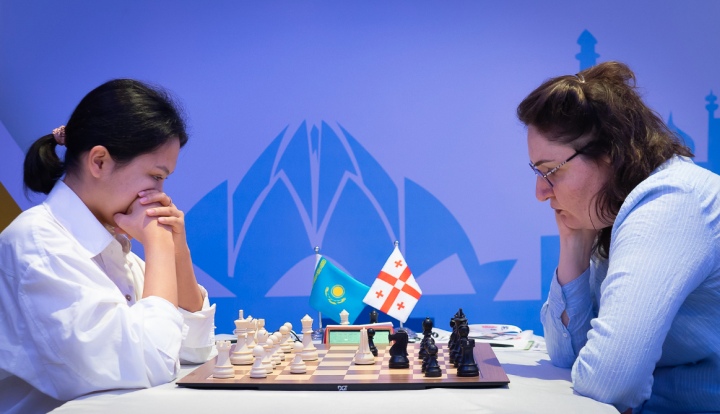
In another Catalan, Aleksandra Goryachina defeated India’s Harika Dronavalli. The Indian player had more initiative but misplayed in the middlegame and ended up with two pawns down. Despite putting up fierce resistance, Goryachkina brought her opponent to defeat after just over four hours of play.
Round Nine was lucky for Nino Batsiashvili, who scored her first victory in the tournament. In the Nimzo-Indian, playing as White against Polina Shuvalova, she took advantage of Black’s mistakes in the middlegame and won.
Compatriots Vaishali Rameshbabu and Humpy Koneru had a peaceful debate in the Ruy Lopez and agreed to split a point after 31 moves.
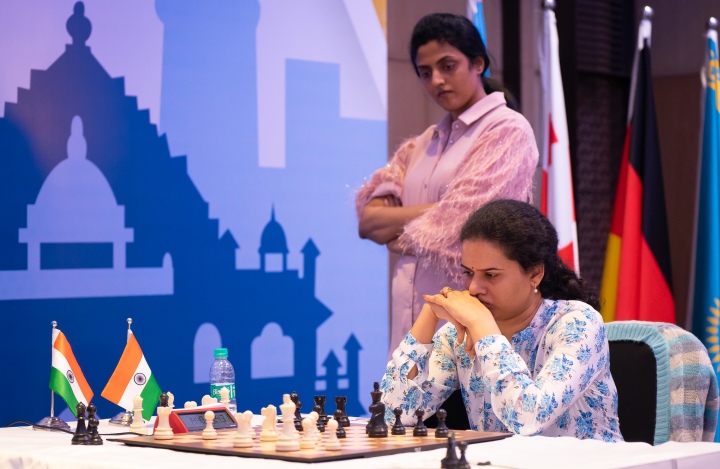
Here follows a closer look at the games of Round Nine:
Bibisara Assaubayeva – Nana Dzagnidze
Before this game, the two played five games in total. The small number of games is probably because the two belong to different generations. Bibisara has three victories, while Nana has only one, with one game ending in a draw.
In the Neo-Catalan accepted, Bibisara deviated from the played lines on move nine, castling her king (other previously played lines include 0-0, Nxd7 or Na3) and got a tiny edge thanks to two bishops. The first important moment happened on move 17.
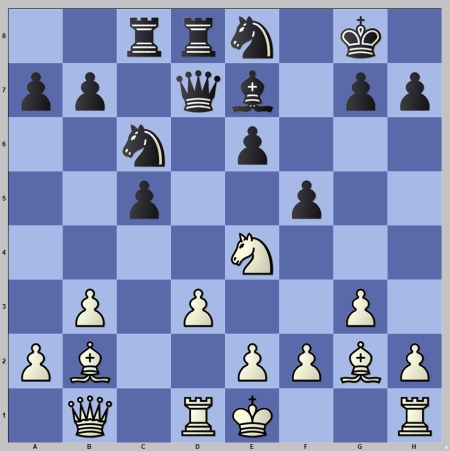
In the post-game interview, Dzagnidze said that she ‘wasn’t sure’ about the 17…f5 move, as it opens some weaknesses in Black’s camp. The game proceeded with a lot of positional regrouping around the centre, hoping to advance.
However, it seemed that Black was the side which had to wait and react to White’s actions. Assaubayeva opted to exchange dark-squared bishops and prepare a d3-d4 push through the centre.
After several inaccuracies by Nana, Bibisara obtained a serious advantage. She had isolated d4-pawn, but this factor was outweighed by her serious pressure in the centre and on Black’s downward e6-pawn.
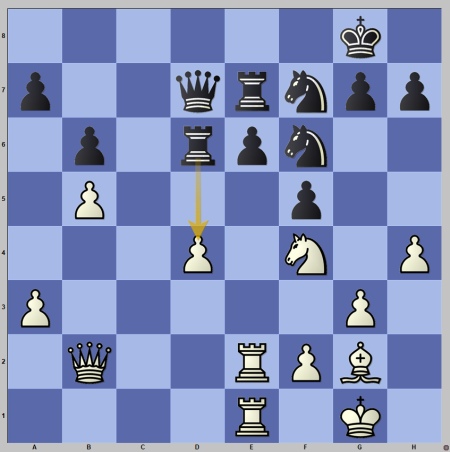
Dzagnidze tried to wriggle out by 33…Rxd4, and it worked, but only because Bibisara wasn’t precise. She took on e6 with her knight when it was better to play 34.Bc6 first and then take on e6 with a rook. Playing 34.Nxe6 straight away Bibisara overlooked 34…Rd1!, which allowed Black to exchange some pieces and simplify the position.
White was still better, but by move 37, her advantage dissipated, and the two soon agreed to draw.

With this draw, Bibisara Assaubayeva is still at the top, with 5½/9, while Dzagnidze has 2½ points.
Vaishali Rameshbabu – Humpy Koneru
This was another Indian clash. Out of 14 games played, Vaishali has three victories, while Humpy has six.
In a rare line of the Ruy Lopez, the two quickly exchanged central pawns and the queens, heading towards an endgame in which Vaishali exerted some pressure on the queenside.
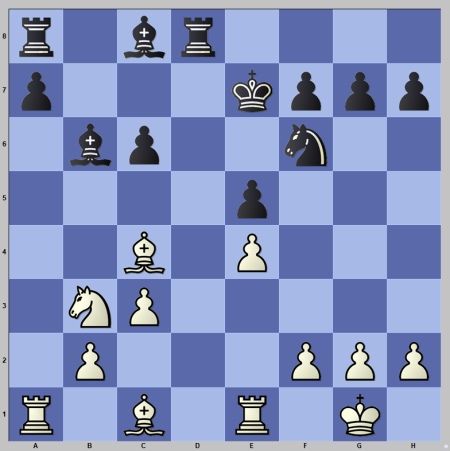
The best option for White was 17.Na5, to probing Black’s weakness and hampering her development. Instead, Harika opted for 17.Be3, allowing Black to activate her c8-bishop.
It led to an equal position, and the two soon agreed to draw. A fourth draw for Vaishali, who now has two points, while Koneru has 3½ points.
Nino Batsiashvili – Polina Shuvalova
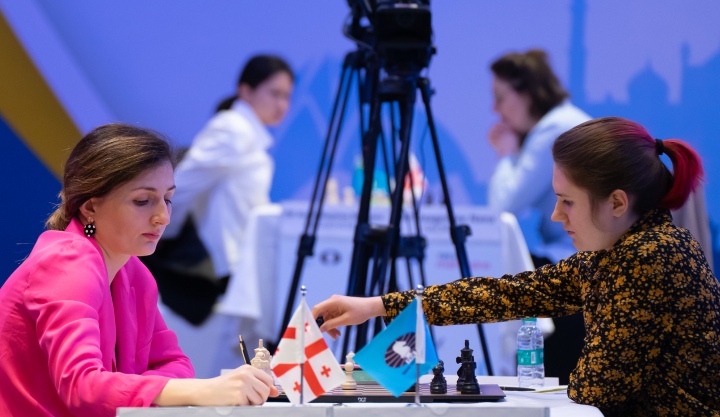
The two have played four times so far, and Nino has two victories while Polina has one.
In the Nimzo-Indian defence, the two entered the Saemisch variation and followed the footsteps of Salem and Moussard (Dubai 2021) up to move ten, where Nino deviated with a very aggressive but questionable 10.f3-f4?!
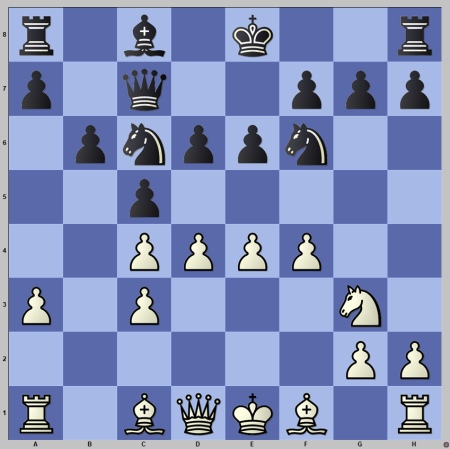
White has an impressive pawn center but has to be careful of overstretching, as it can easily become a weakness. Polina hastily castled (10…cxd4 11.cxd4 h5 looks stronger), and a very sharp game was on.
Shuvalova spent significantly more time in the opening, suggesting that she was surprised by White’s preparation. Still, she countered well by timely chipping away at White’s center by b7-b5 and got a potentially very strong connected c and d pawns.
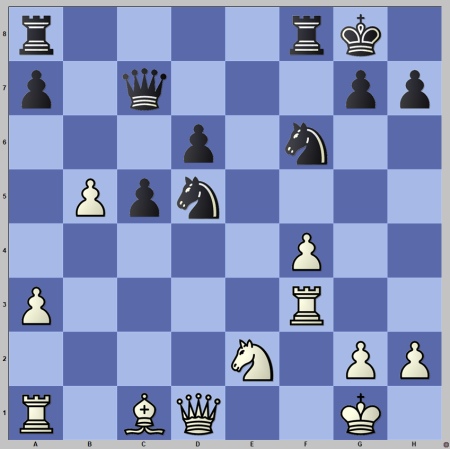
Black is clearly better here. Chess engines suggest 20…Rae8, but Polina preferred 20…Ne7 and then launched operations on the “wrong” flank and allowed White to push the b-pawn to b6, giving her some advantage. It was the start of Shuvalova’s fall. She made several inaccuracies in a row and found herself in a very dangerous position.
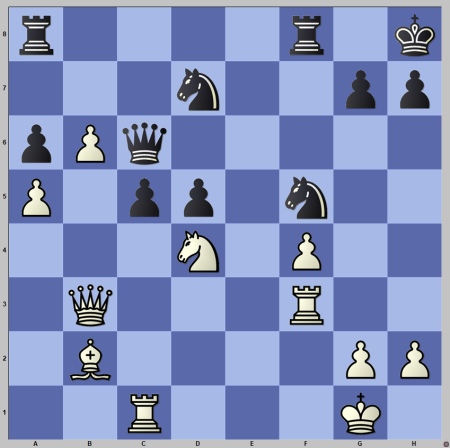
Black needed to move her queen away from the pinned c-file and suffer after 27…Qf6 28.Nxf5 Qxf5 29.Be5. Shuvalova instead decided to take on d4, ending in a net of pins on the c5 pawn.
White could have won on the spot on move thirty with 30.b7!, but Batsiashvili opted for 30.Qc3 and left some chances for Black. Still, Nino preserved a large part of her advantage.
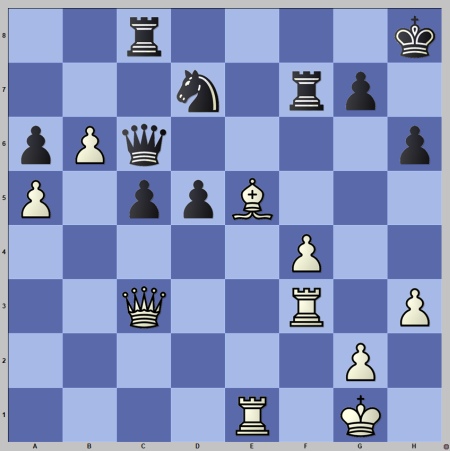
Shuvalova’s best option was to exchange her knight for the bishop on e5 but she played 33…d4? instead, further weakening her central pawns.
The rest of the game was a walk in the park for White as her passers advanced much faster. Shuvalova soon resigned.
It is the first victory for Nino Batsiashvili in the tournament, who lost an overwhelming position in the eighth round. She played seven games so far in New Delhi and is now on 2½ points. Shuvalova remains on 3½.
Aleksandra Goryachkina – Harika Dronavalli
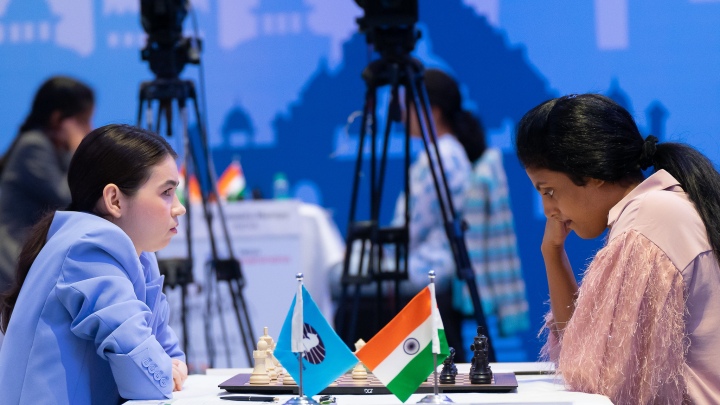
Out of 13 games played, Goryachkina has four victories, while Harika has two.
The two tested a long theoretical line Catalan, in which White sacrifices an exchange for a bishop and a pawn and gets sufficient compensation. Up to move 23 (!), the opponents reproduced the game Makarian – Hovhanessyan (2021), but Harika’s second original move was a serious inaccuracy.
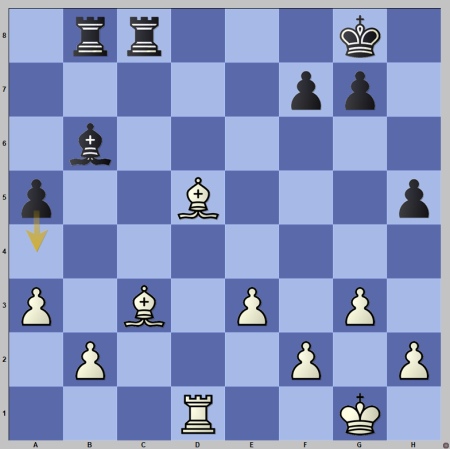
With 24…a4? Harika created a weak pawn in her camp. After 25.Bf3 Rc5? (better was 25…h4) 26.Bb4 Rc2 27.Bc3 White emerged clearly better, threatening to capture Black’s c2 rook.
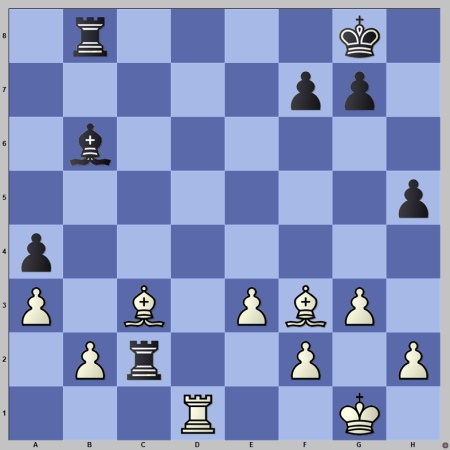
Harika’s only option was 27…Bc5, with the idea of taking the bishop on c3 and capturing the White’s a3-pawn. She instead played 27…Rd8, offering an exchange and hoping to create an escape path for her c-2 rook on White’s first rank, but Aleksandra saw through this and just played 28.Ra1! By this moment, Goryachkina had half an hour, while Harika had just over 15 minutes.
Ultimately, Black had to give up her rook and exchange it for White’s c3-bishop and headed in a hopeless opposite-coloured bishops endgame two pawns down.
Dronavalli fought on, but Goryachkina was precise: she advanced her c-pawn as far as she could before trading it in for Black’s pawns on the kingside. As soon as White’s pawn mass on the kingside set in motion, Dronavalli threw in the towel.

Goryachkina now has five points, just half a point behind the leader, Bibisara Assaubayeva.
Standings after Round 9
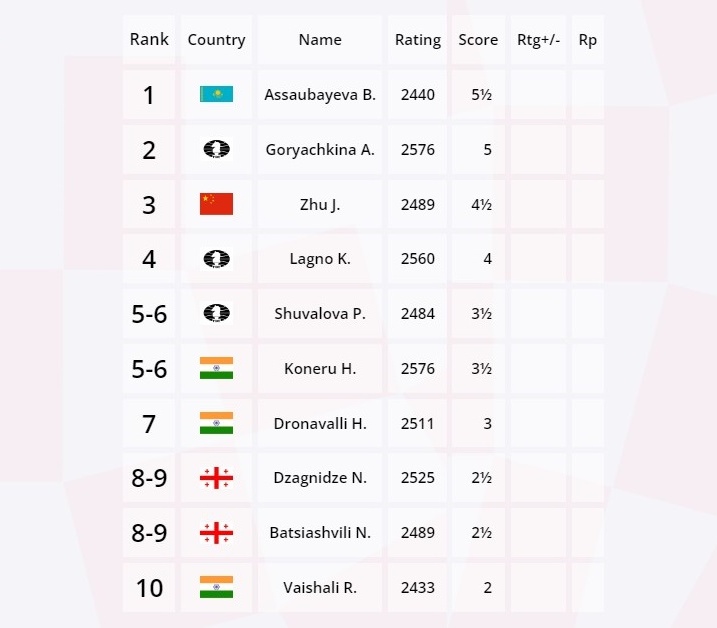
Round 10 of the third leg of the Women’s Grand Prix will take place on Tuesday, 4th April at 3 PM local time.
Round 10 pairings:
Kateryna Lagno – Harika Dronavalli
Polina Shuvalova – Aleksandra Goryachkina
Humpy Koneru – Nino Batsiashvili
Zhu Jiner – Vaishali Rameshbabu
Nana Dzagnidze and Bibisara Assaubayeva have a rest day.
Text: Milan Dinic
Photo: Ismael Nieto
About the Women’s Grand Prix
The FIDE Women’s Grand Prix consists of four tournaments played between September 2022 and May 2023 and includes 16 women players who take part in three of the four tournaments. The two players who score the greatest number of cumulative points in the series shall qualify for the FIDE Women Candidates Tournament 2023-24.
The players participating in the Women’s Grand Prix have been selected based on their performance in key FIDE events and their ELO. Also, each of the four local tournament organisers has a right to nominate a player of their choice.
The time control for the tournament is 90 minutes for the first 40 moves, followed by 30 minutes for the rest of the game with an increment of 30 seconds per move starting from move one.
The total prize fund for each one of the four events is €80,000, with another €80,000 being distributed among the top eight players in the overall standings for the Grand Prix series.
General information about the venue and the dates
The third leg of the Women’s Grand Prix will take place in New Delhi’s Leela Ambience Convention Hotel. The five-star hotel is designed to cater to business events and large meetings and should make an ideal place for a tournament of this level.
The rounds will be played each day from 3 PM local time (9.30 GMT).
For more information about the event, visit https://womengrandprix.fide.com/.







